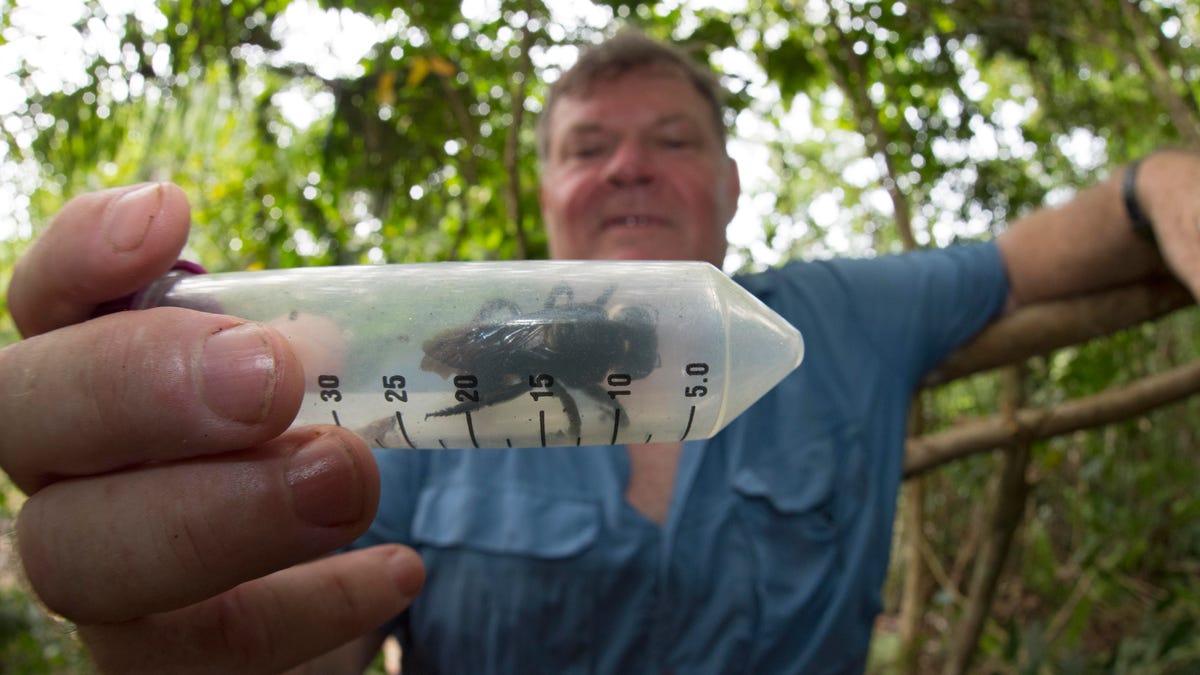Huge bee alert: Look at the world's largest bee and cower in fear
Researchers wondered if Wallace's Giant Bee had gone extinct. But it's definitely here.

Simon Robson, honorary professor of biology at the University of Sydney and Central Queensland University in Australia, with Wallace's giant bee.
The world's largest bee has resurfaced after 38 years.
In January, conservationists found Wallace's Giant Bee, or the Megachile pluto, on a group of Indonesian Islands known as the North Moluccas, the Global Wildlife Conservation reported Thursday.
The Global Wildlife Conservation is a nonproft that's been searching for "lost" species, or species that might not actually be extinct, but haven't been seen in a decade or more.
WORLD’S LARGEST BEE: Take a look at Wallace’s Giant Bee!
— CBSDenver (@CBSDenver) February 21, 2019
It’s the biggest bee in the world and hasn’t been seen in over 30 years ... until now. pic.twitter.com/KB1MjDBCdh
"It was absolutely breathtaking to see this 'flying bulldog' of an insect that we weren't sure existed anymore," Clay Bolt, the photographer who took the rediscovered bee's first photos, said in a statement.
The report describes the bee as being about the size of an adult thumb, with a wingspan of about 2.5 inches (6.35 centimeters). That means it's four times larger than the European honey bee.
It is a very big boy and we're in awe of the size.

